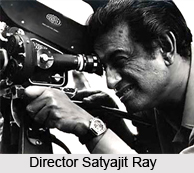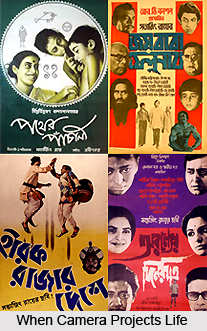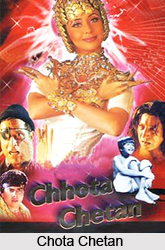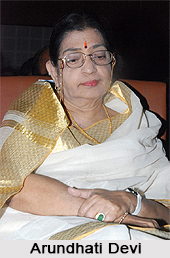 Satyajit Ray as filmmaker has made Indians proud. His films have toured several festivals and won numerous awards. His films reflect the social standing of West Bengal during those times, and some of them had satirical overtones. After his trip to London he was encouraged to become a professional filmmaker. The Vittorio De Sica`s film The Bicycle Thief (1948) had a profound impact on Ray and he decided to film Pather Panchali.
Satyajit Ray as filmmaker has made Indians proud. His films have toured several festivals and won numerous awards. His films reflect the social standing of West Bengal during those times, and some of them had satirical overtones. After his trip to London he was encouraged to become a professional filmmaker. The Vittorio De Sica`s film The Bicycle Thief (1948) had a profound impact on Ray and he decided to film Pather Panchali.
In the initial years however, the Pather Pachali had many problems during the making period. The then Bengali producers were sceptical about the film, as they completely distrusted a first time filmmaker. Pather Pachali took two and a half years to get made, with entirely new faces, which lacked the experience of feature films. In the year 1955 Pather Pachali was completed and turned out to be huge success commercially and received critical acclaim. The film won many awards in 1956 Cannes International Film Festival. This film by Ray assured him the financial backing it needed and helped him to complete the Apu Trilogy: Aparajito (1956; The Unvanquished) and Apur Sansar (1959; The World of Apu).
The Trilogy of Apu tells the tale of a poor son of a Brahmin priest, and his journey in life- his growth from childhood to manhood, which moves from a tiny village to Kolkata. The main theme that reflects in the film is that of modernity and tradition. In his later films he never returned to his concept again, his subsequent films became more and more contemporary and emphasised more on psychology rather than traditional narrative. He consciously avoided repeating himself, and as a result his films were successful in capturing the wide spectrum of mood, period, milieu and genre, with comedies, tragedies, romances, musicals, and detective stories treating all ranks of Bengali society from the mid-19th to the late 20th century.
Most of the characters of Satyajit Ray film possess average talent and ability, unlike the topic of his documentary films that include Rabindranath Tagore (1961) and The Inner Eye (1972). The concept that fascinated Ray most was the inner conflict of a person. Most of his films contain feelings and thoughts, rather than plot and action.
The best films of Ray were based on stories and novels by Tagore, who had a profound influence on the director. The film Charulata (1964; The Lonely Wife) is among such works, where a tragic love story set within a rich Bengali family which had a western influence, is perhaps Ray`s most accomplished film. The film Teen Kanya (1961; "Three Daughters," English-language title Two Daughters), based on short stories of Tagore, is a diverse Trilogy about women, while Ghare Baire (1984; The Home and the World) is a solemn take of Bengal`s first revolutionary movement, set during the period 1907-08 of British rule.
 Major part of Ray`s films is based on Hindu feudal vales and traditionalist mindset, and their possible clash with the contemporary westernised reformist ideas. The film Jalsaghar (1958; The Music Room) is an unusual take about a man who is compassionate and obsessed about music. Then Devi (1960; The Goddess), a film which portrays the obsession with a girl`s divine incarnation; and Kanchenjungha (1962), Ray`s first innovative screenplay and first film in colours, a delicate study of the concept of arranged marriage among rich and westernized Bengali society. Ray`s first film in Hindi Language were Shatranj ke Khilari (1977; The Chess Players), with comparatively big budget. This films probes deep into the delicate concept of western influence in India.
Major part of Ray`s films is based on Hindu feudal vales and traditionalist mindset, and their possible clash with the contemporary westernised reformist ideas. The film Jalsaghar (1958; The Music Room) is an unusual take about a man who is compassionate and obsessed about music. Then Devi (1960; The Goddess), a film which portrays the obsession with a girl`s divine incarnation; and Kanchenjungha (1962), Ray`s first innovative screenplay and first film in colours, a delicate study of the concept of arranged marriage among rich and westernized Bengali society. Ray`s first film in Hindi Language were Shatranj ke Khilari (1977; The Chess Players), with comparatively big budget. This films probes deep into the delicate concept of western influence in India.
Humour is an important aspect in Ray films. The films like Parash Pathar (1957; The Philosopher`s Stone) and in the musical satire Goopy Gyne Bagha Byne (1969; The Adventures of Goopy and Bagha) have had a lasting impact on the audience. The music for the latter film was composed by Ray himself, and is among his best-known contributions to Bengali culture.
Other works of Ray mainly concerns the city life of Kolkata, apart from Ahsani Sanket (1973; Distant Thunder) that deals with moving story of the Bengal Famine of 1943-44. Aranyer Din Ratri (1970; Days and Nights in the Forest) treats us with adventures of four young men in a rural forest region. Mahanagar (1963; The Big City) and a trilogy of films made in the 1970s-Pratidwandi (1970; The Adversary), Seemabaddha (1971; Company Limited), and Jana Aranya (1975; The Middleman)-inspect the fight for employment of the middle class against a backdrop (from 1970) of radical, Maoist-inspired aggression, government oppression, and sinister corruption.
After a break in where Ray made Pikoo (1980). He subsequently fell ill with heart disease. Later with Ganashatru (1989; An Enemy of the People), an Indianized version of Henrik Ibsen`s play, he returned to the subject of corruption in society. Shakha Prashakha (1990; Branches of the Tree), and the sublime Agantuk (1991; The Stranger), had tough male centric characters, defiantly objecting to the moral and intellectual rot of adored Bengal.






